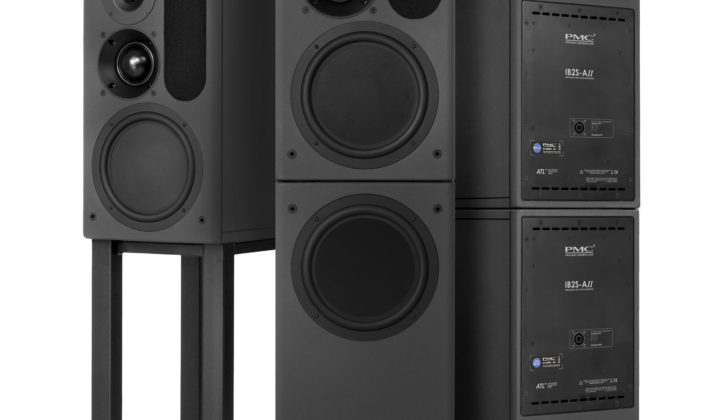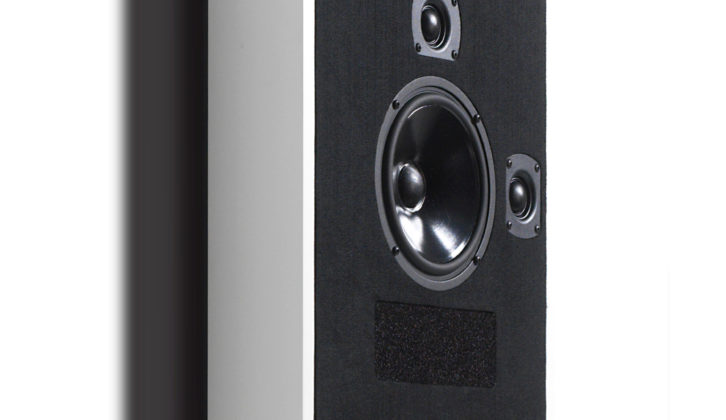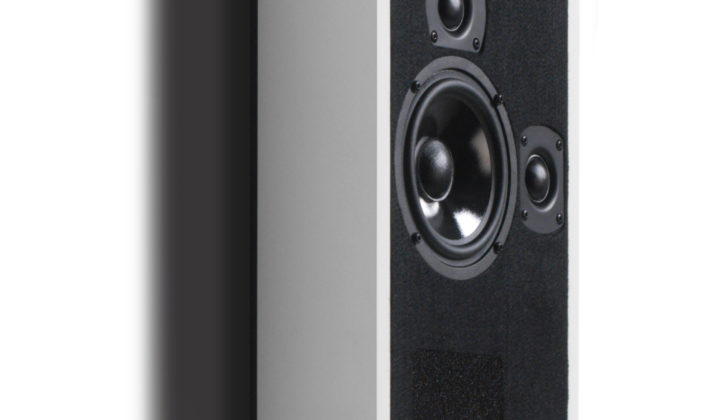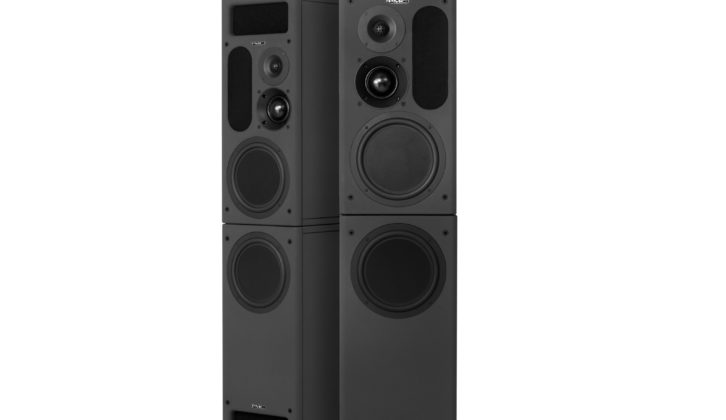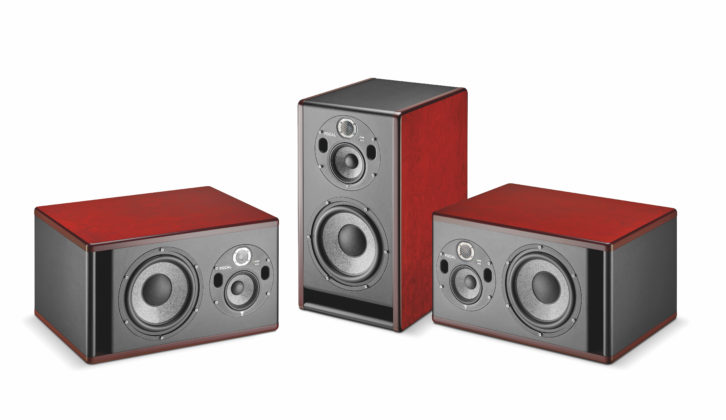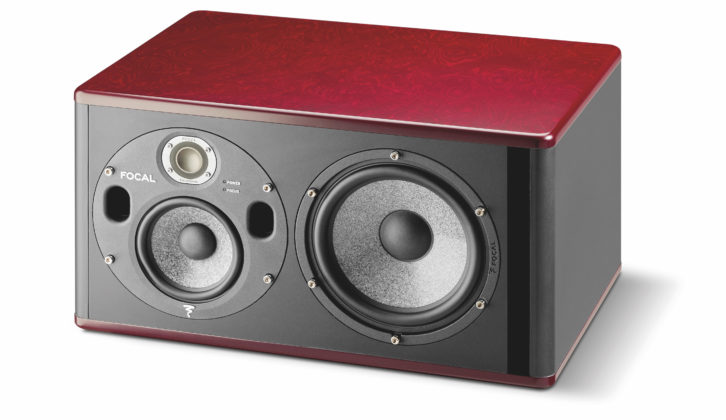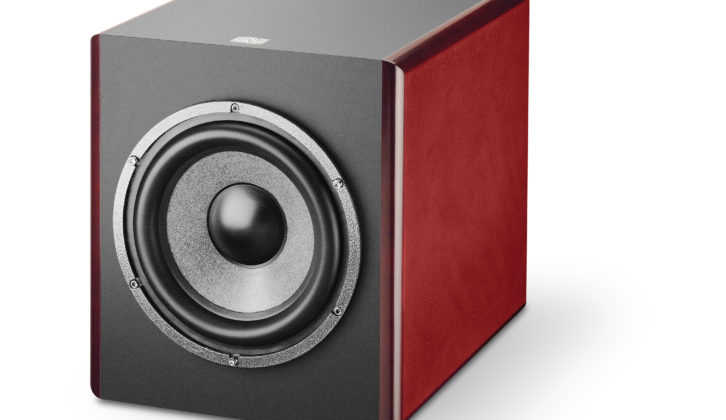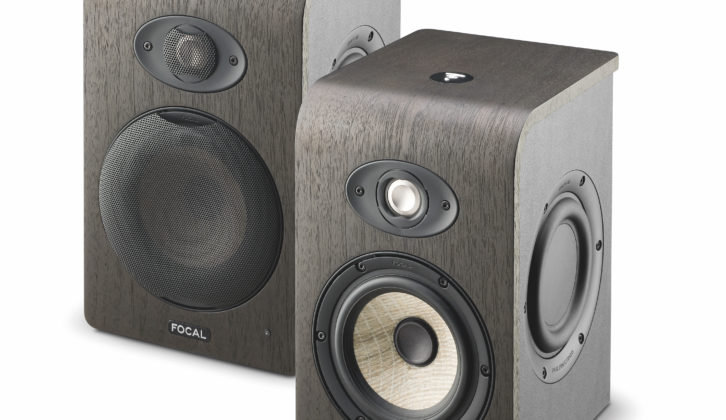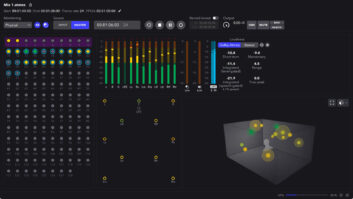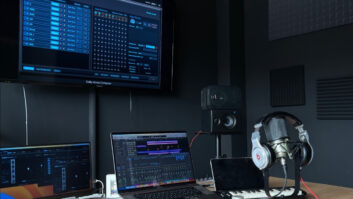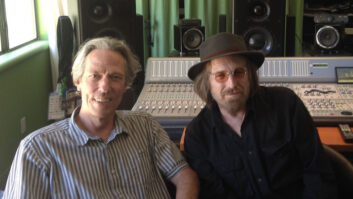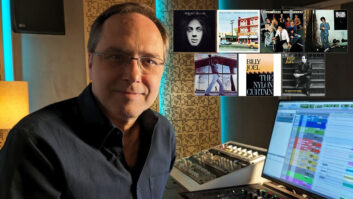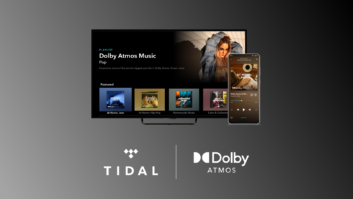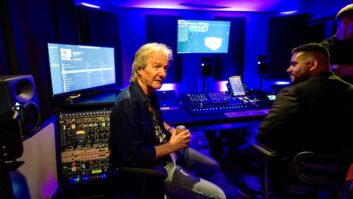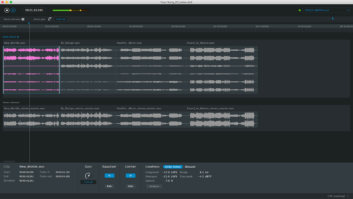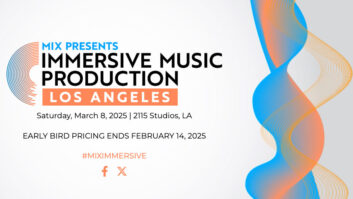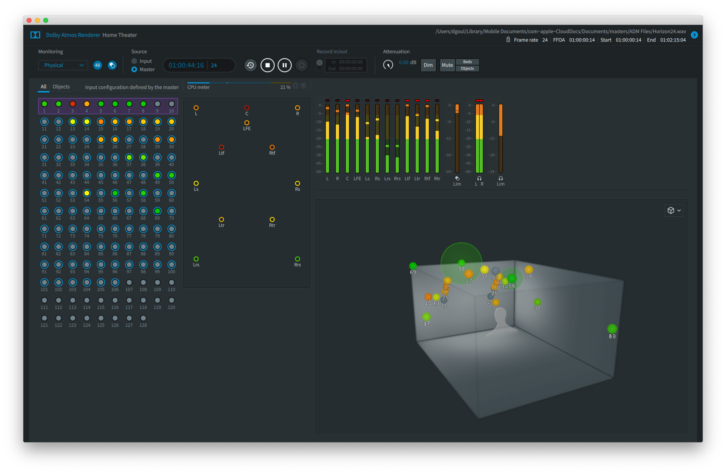
Dolby Atmos Renderer
Every engineer working in the Dolby Atmos format will eventually find themselves spending lots of time with the Dolby Atmos Renderer, a core component of any Atmos mixing system. It allows the reproduction of a particular sound field in an environment that is different from the environment in which it was created. It has the capability of using up to 128 input channels that can be defined as either bed channels or objects, and also receives object metadata from your DAW (either via a native object panner, or the Dolby Atmos Music Panner plug-in). The input configuration of a session is entirely separated from the output configuration of a system, and the Renderer connects those two defined environments.
The Dolby Atmos Renderer also includes a binaural renderer, which can be used to create and monitor Dolby Atmos mixes on headphones.
The Dolby Atmos Renderer is included in the Dolby Atmos Mastering Suite and the Dolby Atmos Production Suite.
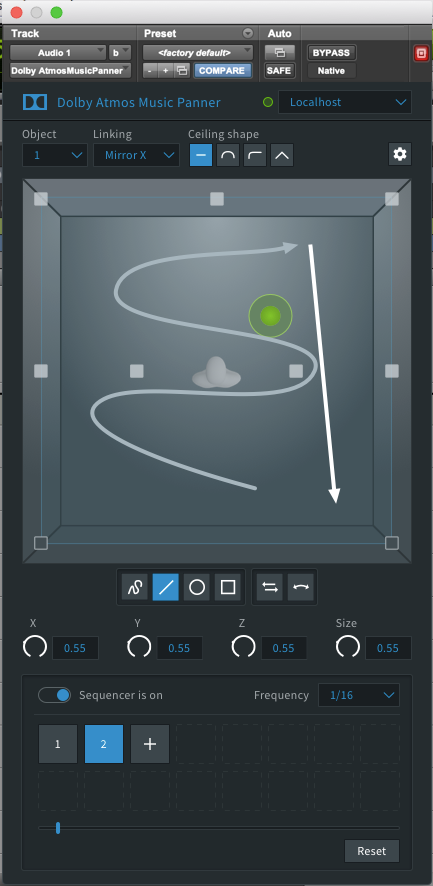
Dolby Atmos Music Panner
The Dolby Atmos Music Panner is the first Atmos plug-in built specifically for music workflows. With the Music Panner, artists, engineers and producers can create dynamic, tempo-synced panning sequences for objects in their Dolby Atmos mixes. The plug-in is available in AAX, AU and VST3 formats, and together with the Dolby Atmos Production Suite or Mastering Suite, it enables users to create immersive Dolby Atmos Music mixes using their preferred DAW (Pro Tools, Logic Pro, Ableton and Nuendo) on the Mac platform.
The Dolby Atmos Music Panner is a free download and requires either the Dolby Atmos Mastering Suite or Dolby Atmos Production Suite.
Dolby Atmos Production Suite
The Dolby Atmos Production Suite is intended for use on a single Mac computer alongside your DAW. The Dolby Atmos Production Suite package includes the Dolby Atmos Renderer, which provides the software required to monitor, create, and play back Dolby Atmos content, and the Dolby Audio Bridge, a virtual Core Audio device that allows the user to route audio from their DAW into the Dolby Atmos Renderer.
Dolby Atmos Mastering Suite
The key differentiator of the Dolby Atmos Mastering Suite is that the Renderer is intended to run on a dedicated Mac or Windows computer, with the DAW on a separate computer, allowing for larger more complex mixes. The Dolby Atmos Mastering Suite also includes support for room equalization (EQ) and calibration, as well as remote control of the rendering and mastering workstation via the Dolby Atmos Renderer Remote application.
ATMOS IN THE BOX
While Ableton and Logic Pro have the ability to incorporate the new Dolby Music Panner plug-in, so far only Pro Tools and Steinberg have natively integrated Dolby Atmos Panning and provide a direct connection to the Dolby Atmos Renderer.
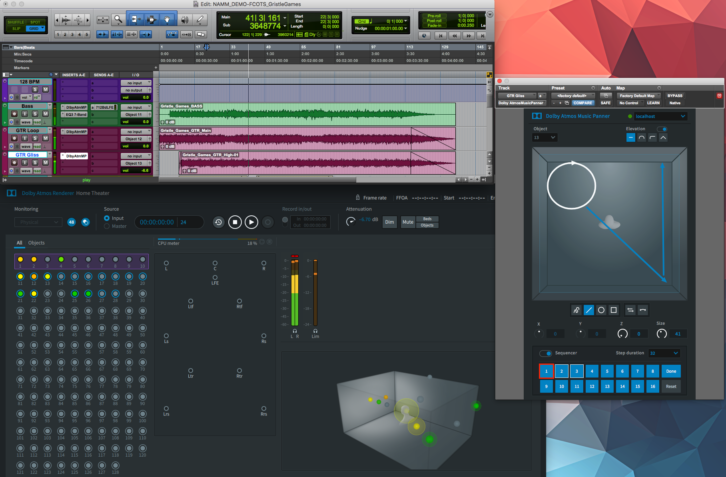
Avid Pro Tools | Ultimate and MTRX/MTRX Studio
Version 12.8 of Pro Tools | Ultimate or higher allows for direct connection to the Dolby Atmos Renderer and native object panning from the Pro Tools surround panner. The Avid MTRX is a fully customizable monitor matrix allowing for complete studio control, including room calibration with the SPQ card.
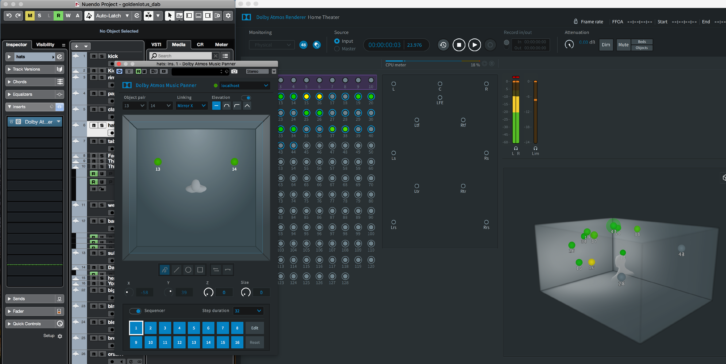
Steinberg Nuendo 10
Version 10 or higher of Steinberg Nuendo allows for a direct connection to the Dolby Atmos Renderer and native object panning from the included VST Multi-panner. When paired with a Steinberg Nuage worksurface, control capabilities are enhanced and workflows are even more streamlined.
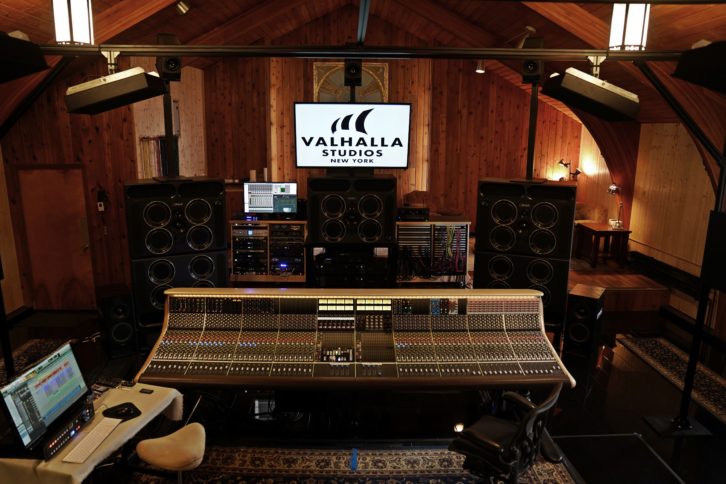
And Outside the Box: Fix 360 Console
While the majority of Dolby Atmos Music mixes have been done within DAWs, many have incorporated consoles in the workflow, typically an Avid S6. Recently an analog alternative was released by the legendary Paul Wolff and his company Fix Audio Designs. A 64-channel version was installed in Ronald Prent and Darcy Proper’s new Valhalla Studios in Auburn, N.Y.
In a nutshell, the 64-input Fix 360 Console supports any format from stereo through the various surround sound configurations to immersive Dolby Atmos, Sony 360RA, Auro-3D and DTS:X. There are panning facilities for both the lower and upper horizontal planes, as well as between those planes, plus a dedicated LFE send. There are eight object sends per channel, and the desk also accommodates Sony 360RA’s two front floor speakers. A separate simultaneous stereo mix can be generated alongside any other format. The comprehensive monitor section supports three 24-channel-wide configurations, each with trim.
SPEAKER SYSTEMS
While technically all speakers can be used in an immersive audio system, a few manufacturers have been working in the background with Dolby for years, starting back in 2014-15 with JBL in post-production. Music, however, has different demands than post, and the following companies have been notable for their early commitment to the format, to the point that all but one are currently integrated into Dolby’s DARDT program for recommended speaker setup, placement, calibration, etc.
PMC
PMC deserves the lion’s share of the credit for developing professional Dolby Atmos Music configurations. Their work started three years ago (see Cover Story) in Capitol Studio C, and what they came up with has turned into a blueprint of sorts for subsequent UMG-owned Atmos mix rooms in Los Angeles, Nashville and at PMC’s own studio in Highland Park, Los Angeles. That configuration includes LCR, sub, 10 surrounds, and six height channels:
- Left and Right: PMC IB2S-XBD-AII (3-way fully active)
- Center: PMC IB2S-AII vertical center (3-way fully active)
- Subwoofer (4): PMC twotwoSub2 (active 10-inch subwoofer. Capitol has four subs—two stacked and aligned, left and right of the center channel).
- Surround channels (10): PMC Wafer 1 in-wall (2-way passive, 5.5-inch LF driver with 2 x 27mm soft dome tweeter)
- Height Channels (6): PMC Wafer 2 on-wall (2-way passive 6.5-inch LF driver with 2 x 27mm soft dome tweeter)
ATC
ATC made a big splash with the opening of Blackbird Studios’ Studio C in Nashville in mid-2019, though the company, and its U.S. distributor, Brad Lunde, had been working with Dolby closely for about six years, mainly in the test labs and screening rooms at the company’s San Francisco headquarters. A typical professional 9.1.6 ATC mix room like Blackbird’s Studio C might include:
- Left, Center, Right: ATC SCM300ASL Pro (3-way fully active, dual ATC 15″ woofers, ATC 3″ soft dome midrange, 1″ soft dome tweeter, LCR with vertically oriented center channel)
- Subwoofer (6): ATC SCM0.1/15SL Pro (Active, ATC 15″ woofer. Blackbird Studio C has 4 up front under the LCR and 1 on each LR side with surround channels)
- Surround Channels (6): ATC SCM100ASL Pro (3-way fully active, ATC 12″ woofer, ATC 3″ soft dome midrange, ATC 1″ soft dome tweeter)
- Height Channels (6): ATC SCM100ASL Pro suspended to ceiling frame (3-way fully active, ATC 12″ woofer, ATC 3″ soft dome midrange, ATC 1″ soft dome tweeter)
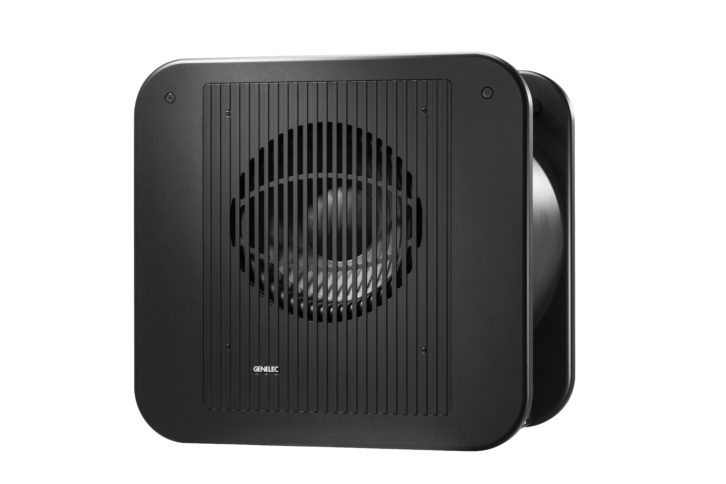
GENELEC
Back in 2015 at the NAB Show, Will Eggleston of Genelec set up a Dolby Atmos playback system on a small, rectangular truss, with three chairs in the center and satellite speakers for surrounds and overheads. There was no music-only content, and nothing in broadcast, so he got the approvals and played back movies on Blu-ray. By NAMM 2020, the rig had grown quite a bit, and Genelec had established a presence in post-production, broadcast and now music. (See story on The Weeknd, page 28). Genelec’s recommended 7.1.4 high-end Dolby Atmos Music setup might include:
- Left, Center, Right: 8351 SAM (3-way coaxial, active, 113 dB SPL)
- Subwoofer (2): 7380 SAM (15-inch woofer; 16 Hz – 100 Hz, -6 dB)
- Surround Channels (6): 8341 SAM (3-way coaxial, active, 110 dB SPL, with Acoustically Concealed
- Woofer technology)
- Height Channels (4): 8341 SAM (see above)
FOCAL
At the 2020 NAMM Show, French manufacturer Focal set up a full-blown Dolby Atmos Music rig on a large truss, in one of the big rooms along the wall. Outside the room, as attendees walked in, they were able to listen to Atmos mixes through new headphones or in a new Porsche parked outside. A typical Focal 7.2.4 Atmos music system would include:
- Left and Right: Trio11 Be (3-way with 10-inch driver, 5-inch midrange and 1-inch inverted dome tweeter)
- Center: Trio11 Be (see above)
- Subwoofer (2): Sub6 (10-5/8-inch Focal “W” composite sandwich cone driver)
- Surround Channels (6): Trio6 Be (8-inch woofer, 5-inch midrange, 1-inch inverted dome tweeter)
- Height Channels (4): Shape 50 (5-inch driver, 1-inch tweeter, with ceiling mounting points on back)
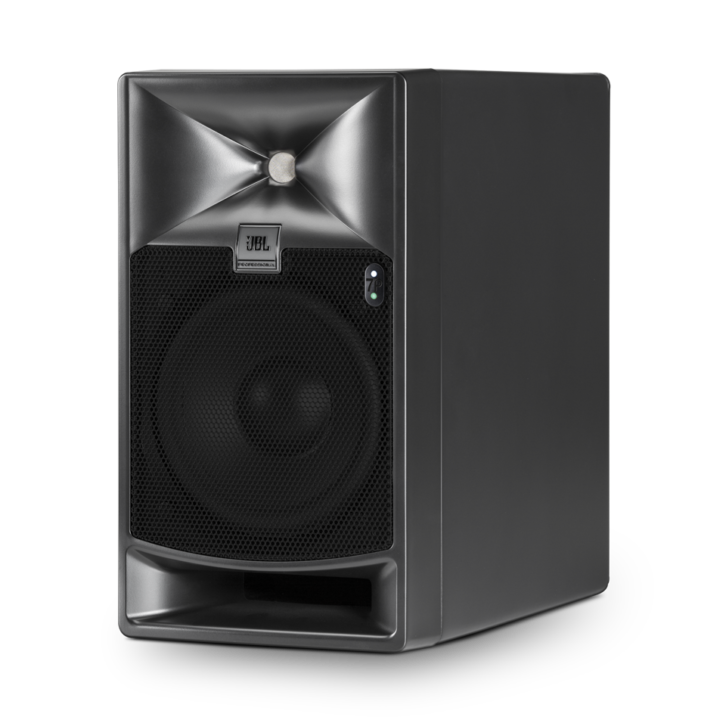
A NOD TO THE TRAILBLAZER: JBL 7 SERIES
The launch of the JBL 7 Series—primarily for surround and height channels, often coupled with JBL Cinema Speakers behind a screen or JBL M2 main monitors for LCR in music rooms—led to a flood of JBL systems throughout the post-production industry, in the then-emerging mid-sized sound design suites and TV mix rooms. While the company has not to our knowledge embarked on an aggressive re-launch for Dolby Atmos Music, no doubt JBL M2 monitors and 7 Series speakers will be a player as more music-only mix studios start popping up.
